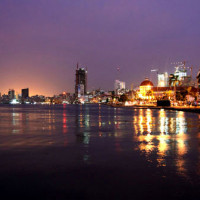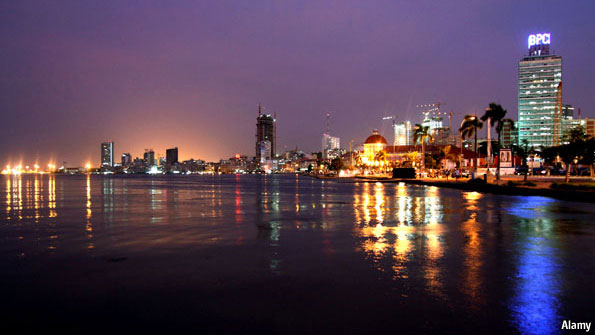 LUANDA — As Angola is experiencing one of the fastest-growing economies in the world, its capital city, Luanda, is facing a dramatic transformation. It has become a land of opportunity for some westerners, but for some Angolans, the development of the city has a bitter taste.
LUANDA — As Angola is experiencing one of the fastest-growing economies in the world, its capital city, Luanda, is facing a dramatic transformation. It has become a land of opportunity for some westerners, but for some Angolans, the development of the city has a bitter taste.
The city has become a big construction site. Everywhere in Luanda, new buildings are rising from the ground, as a ballet of cranes is shaping the new skyline of the capital. Luanda is busy leaving the past behind – burying 27 years of civil war and devastation under mountains of petrodollars.
With an annual growth rate of 11 percent, the second biggest oil producer in Africa is attracting companies and western workers – many fleeing economic crises elsewhere.
Like Sylvia Soares, the young Portuguese architect who has lived in Luanda for two years. She says she would not have had the same opportunities, had she stayed in Portugal.
“There is no job in Portugal. Not even for the renowned architects, so you can imagine how it is for young architects who have just graduated from university,” she said.
Soares says her parents approve of her choice to come work in Angola.
“[My parents] have seen it as a short-period thing to do, because by the time I come back to Portugal, I’ll have a better financial situation than if I had stayed in Portugal,” she said.
And Luanda is a good place for a young architect, as it transforms itself to meet its ambition of becoming a world-class city. A few of the changes include the new parliament that is a replica of the American congress and the newly inaugurated waterfront.
Geographer Chloé Buire says the social composition of the city is also changing.
“There is a whole rescaling of the city actually,” Buire said. “And it’s not only that there is a special sprawl, like, expansion, but also a whole social reshaping of the central city being emptied of its poorest communities [which] were evicted in the peripheries.”
The evictions started in 2010. To provide the space for a new political center, the government destroyed several slums and neighborhoods. Thousands of families were relocated – one hour, sometimes two, away from the city center.
Zango is one of the new neighborhoods where the people were re-settled.
Carolina, who now lives in Zango, remembers the day they came to destroy her house in the city.
“It was a surprise, nobody knew. Suddenly, they came and said that they were going to destroy the houses,” she said. “They brought us in this open space. We had nothing. There was a lot of young kids, and we were getting sick because of the mosquitos.”
Carolina says her husband lost his truck-driving job because he now lives too far away. She has to spend $10 and take five different taxis to travel to the city and back every day.
“My life is worse now, because to eat, we have move up and down every day to sell things,” she said.
Today, approximately 30 percent of Angolans live in Luanda, and the development of the city – that started even during the war – is expected to continue in the coming years.
– Doing business in Africa



Comment here
You must be logged in to post a comment.